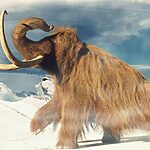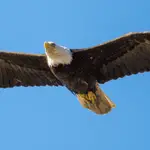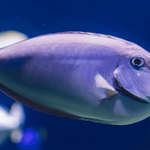Australia is home to some of the most unique and bizarre wildlife on the planet. From the duck-billed platypus to the hopping kangaroo, the land Down Under boasts an incredible array of weird animals that have captured the imagination of people around the world.
These strange creatures have evolved in isolation for millions of years, resulting in a fascinating collection of mammals, birds, reptiles, and even cephalopods that are found nowhere else on Earth.
In this article, we’ll explore 15 of the most remarkable and peculiar animals that call Australia home, delving into their unique characteristics, behaviors, and habitats.
Quick Answer: Australia is home to bizarre creatures like the platypus, kangaroo, koala, Tasmanian devil, wombat, thorny devil, cassowary, numbat, quokka, frilled-neck lizard, dingo, magpie, and giant cuttlefish.
Key Takeaways:
- Australia is home to some of the most unique and bizarre wildlife on the planet, including the platypus, kangaroo, koala, Tasmanian devil, and wombat.
- Many of Australia’s iconic animals, such as the Tasmanian devil and koala, face serious threats like habitat loss, disease, and climate change, requiring ongoing conservation efforts.
- Australia’s diverse landscapes, from tropical rainforests to arid deserts, support an incredible array of weird and wonderful creatures, each with its own fascinating adaptations and behaviors.
15 Weird and Wonderful Wildlife of Australia
Australia is renowned for its diverse and unique wildlife, which has evolved in isolation for millions of years. The continent is home to some of the most peculiar and iconic animals on the planet, each with its own distinctive features, adaptations, and quirky characteristics.
1. Platypus: The Duck-Billed Oddity
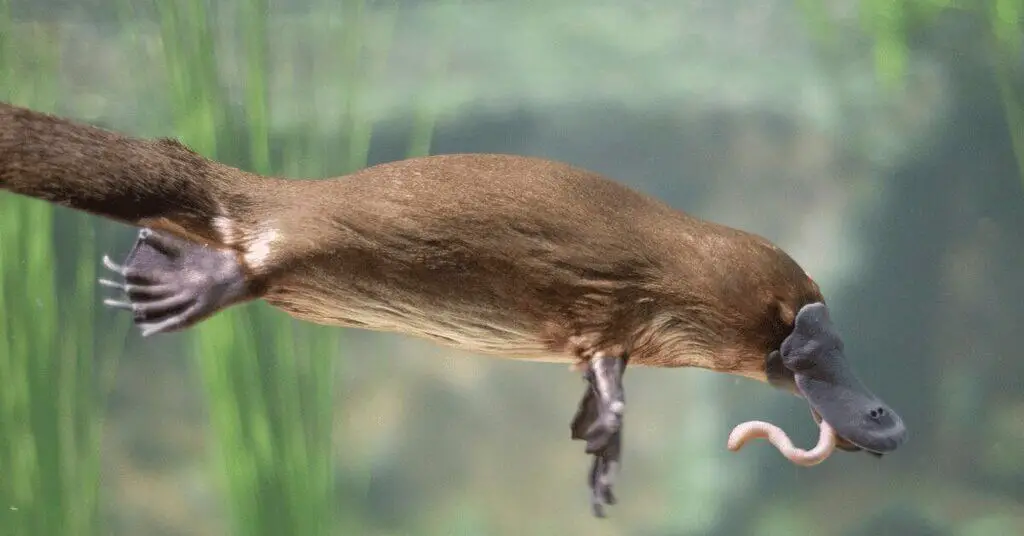
The platypus is a semi-aquatic mammal that looks like it was assembled from spare parts of other animals. With a duck-like bill, webbed feet, and a beaver-like tail, this extraordinary creature is one of Australia’s most recognizable and beloved animals.
Unique Features and Adaptations
The platypus is equipped with an array of unique features and adaptations that enable it to thrive in its aquatic environment. Its sensitive electroreceptors help it locate prey underwater, while its venomous ankle spurs provide a formidable defense against predators.
The platypus’s thick, waterproof fur keeps it warm and dry as it navigates the cool waters of eastern Australia.
Habitat and Distribution
Platypuses are found in the rivers, streams, and lakes of eastern Australia, from Queensland to Tasmania. They prefer clean, well-oxygenated water with healthy riparian vegetation, which provides shelter and food for these fascinating creatures.
Best Places to Spot Platypuses
If you’re hoping to catch a glimpse of a platypus in the wild, some of the best locations include the Breakneck River in Queensland, the Tidbinbilla Nature Reserve in the Australian Capital Territory, and the Warrawong Earth Sanctuary in South Australia. To increase your chances of spotting one, visit during dawn or dusk and look for ripples or bubbles in the water.
2. Kangaroo: The Hopping Icon
Kangaroos are perhaps the most iconic and recognizable of all Australian animals. These magnificent marsupials are known for their powerful hind legs, unique reproductive system, and social structure.
Different Species of Kangaroos
Australia is home to several species of kangaroos, including the red kangaroo (the largest marsupial in the world), the eastern grey kangaroo, and the western grey kangaroo. Smaller macropods, such as wallabies and wallaroos, are also closely related to kangaroos.
Fascinating Kangaroo Facts
Did you know that kangaroos can hop at speeds of up to 56 kilometres per hour and cover distances of up to 9 metres in a single bound? Female kangaroos can also have three different stages of offspring development simultaneously: an embryo in the uterus, a joey in the pouch, and a young kangaroo outside the pouch. These highly social animals live in groups called mobs.
Where to See Kangaroos in the Wild
To see kangaroos in their natural habitat, head to one of Australia’s many national parks or wildlife reserves. Top spots include Murramarang National Park in New South Wales, Grampians National Park in Victoria, and Lucky Bay in Cape Le Grand National Park, Western Australia.
Remember to keep a safe distance and avoid feeding the kangaroos to ensure a responsible wildlife viewing experience.
3. Koala: The Eucalyptus-Loving Marsupial
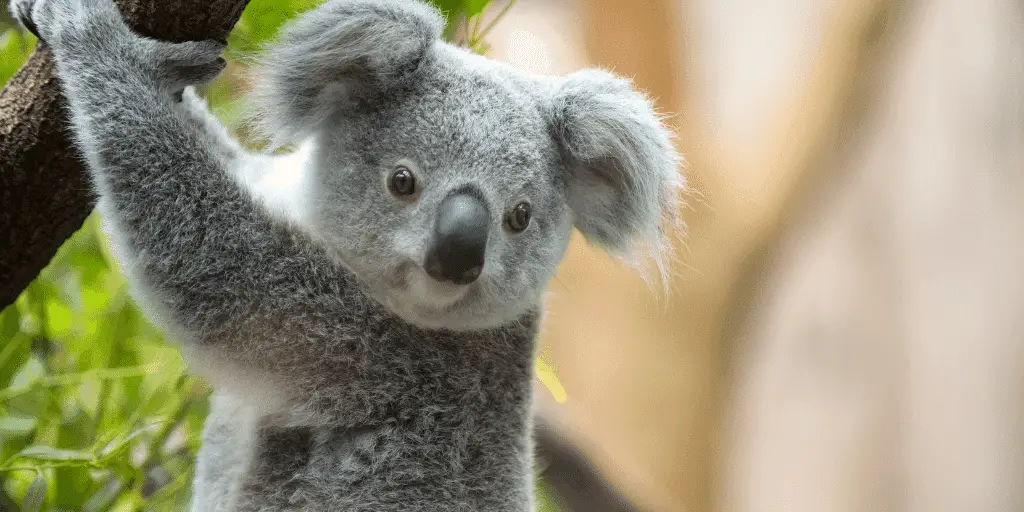
Koalas are another iconic Australian animal, adored for their cute appearance and love of eucalyptus leaves. These fascinating marsupials have a unique biology and behavior that sets them apart from other animals.
Koala Biology and Behaviour
Koalas have a specialized digestive system that allows them to break down and detoxify the tough, fibrous eucalyptus leaves that make up the majority of their diet. They are also known for their low-energy lifestyle, sleeping up to 20 hours a day to conserve energy. While generally solitary animals, koalas do have a hierarchical system within their populations.
Conservation Status and Threats
Koalas are listed as vulnerable by the International Union for Conservation of Nature (IUCN), with populations declining due to habitat loss, fragmentation, and degradation.
Other threats include disease (such as chlamydia), car strikes, dog attacks, and climate change-related issues like heatwaves and bushfires. Conservation efforts, such as habitat protection, restoration, and research, are crucial for the survival of these beloved marsupials.
Top Spots for Koala Encounters
To see koalas in the wild, head to the eucalyptus forests of eastern Australia, such as the Great Otway National Park in Victoria or the Port Stephens area in New South Wales. For guaranteed sightings, visit wildlife sanctuaries like the Lone Pine Koala Sanctuary in Queensland or the Cleland Wildlife Park in South Australia, which offer close-up encounters with koalas.
4. Tasmanian Devil: The Feisty Scavenger
Tasmanian devils are iconic Australian marsupials known for their fierce appearance, loud screeching, and powerful jaws. These unique animals play a vital role in the ecosystem as scavengers.
Tasmanian Devil Characteristics and Diet
Tasmanian devils have a stocky build, black fur with white patches, and large, powerful jaws. Their keen sense of smell helps them locate food and navigate their environment. As opportunistic scavengers, they feed primarily on carrion, but also hunt small prey like birds, fish, and insects. Tasmanian devils are efficient scavengers that help clean up carcasses and prevent the spread of disease in the ecosystem.
Conservation Efforts and Challenges
Tasmanian devils are listed as endangered by the IUCN, with populations declining drastically due to devil facial tumour disease (DFTD), a contagious cancer that has wiped out up to 90% of devil populations in some areas.
Other threats include habitat loss, road accidents, and competition with introduced predators like foxes and cats. Conservation efforts, such as captive breeding programs, disease research, and habitat protection, are underway to help protect these unique marsupials.
Where to Find Tasmanian Devils
In the wild, Tasmanian devils are found only on the island state of Tasmania, with some of the best spots being the Cradle Mountain-Lake St Clair National Park and the Narawntapu National Park.
For guaranteed sightings, visit wildlife parks such as the Bonorong Wildlife Sanctuary and the Tasmania Zoo, which offer close-up encounters with Tasmanian devils and the opportunity to learn more about their conservation.
5. Wombat: The Barrel-Shaped Burrower
Wombats are unique Australian marsupials known for their sturdy, barrel-shaped bodies and powerful digging abilities. These endearing creatures are found in three species across the continent.
Types of Wombats and Their Habits
Australia is home to three species of wombats: the common wombat (also known as the bare-nosed wombat), the northern hairy-nosed wombat, and the southern hairy-nosed wombat.
These animals have a sturdy build, short legs, and small eyes and ears. Wombats are nocturnal and herbivorous, feeding on grasses, roots, and bark. They are also known for their unique adaptation of producing cubic faeces, which helps them mark their territory and prevent their droppings from rolling away.
Wombat Conservation and Threats
While common wombats are not currently considered threatened, northern hairy-nosed wombats are critically endangered, with only around 200 individuals remaining in the wild.
Southern hairy-nosed wombats are near threatened, with populations declining due to habitat loss, drought, and competition with introduced herbivores like rabbits and livestock. Other threats to wombats include disease (such as sarcoptic mange), road accidents, and illegal hunting. Conservation efforts, such as habitat protection, research, and community education, are essential for the survival of these unique marsupials.
Best Places to See Wombats
To see wombats in the wild, visit Cradle Mountain-Lake St Clair National Park in Tasmania, Kangaroo Valley in New South Wales, or Wilsons Promontory National Park in Victoria. When searching for wombats, look for their distinctive cube-shaped droppings, listen for their low grunts, and explore at dawn or dusk when they are most active.
6. Thorny Devil: The Spiky Desert Dweller
The thorny devil, also known as the thorny dragon or moloch, is a small, spiky lizard found in the arid regions of central and western Australia. This unique reptile is covered in an impressive array of spikes and thorns, making it one of the most visually striking animals in the Australian outback.
Unique Features and Adaptations
Thorny devils have several unique features and adaptations that help them survive in their harsh desert environment:
- Spiky armor provides protection from predators
- False head on the back of the neck is used to confuse attackers
- Camouflage coloration helps the thorny devil blend in with its surroundings
- Ridged scales on the underside channel dew and moisture from any part of the body to the mouth
Diet and Feeding Habits
Despite their intimidating appearance, thorny devils are gentle creatures that feed almost exclusively on ants. They use their sticky tongue to capture ants and can consume thousands of them in a single meal.
Thorny devils have a unique way of obtaining water in the desert. They collect dew and moisture on their skin, which is then channeled to their mouth through the ridged scales on their underside.
Habitat and Distribution
Thorny devils are found in the arid and semi-arid regions of central and western Australia, including the Great Sandy Desert, Gibson Desert, and the Pilbara. They prefer sandy or rocky habitats with sparse vegetation.
These lizards are well-adapted to the extreme temperatures of the desert, being active during the day and seeking shelter in burrows or under vegetation during the hottest parts of the day and at night.
7. Cassowary: The Dinosaur Bird
The cassowary is a large, flightless bird found in the tropical rainforests of northeastern Australia and New Guinea. Often referred to as the “dinosaur bird” due to its prehistoric appearance, the cassowary is one of the most striking and potentially dangerous birds in Australia.
Physical Characteristics and Behavior
Cassowaries are known for their distinctive appearance, which includes:
- Tall, helmet-like casque on the head
- Bright blue and red neck and head
- Long, sharp claws on their powerful legs
- Black, hair-like feathers covering the body
These birds are solitary and territorial, defending their home ranges from other cassowaries and potential threats. They are also excellent swimmers and can cross wide rivers and swim in the ocean.
Diet and Ecological Role
Cassowaries are frugivores, primarily feeding on fallen fruit from rainforest trees. They play a crucial role in seed dispersal, helping to maintain the diversity of the rainforest ecosystem.
In addition to fruit, cassowaries also consume fungi, insects, and small vertebrates like frogs and snakes.
Habitat and Conservation
Cassowaries are found in the tropical rainforests of northeastern Australia, primarily in the Wet Tropics region of Queensland. They require large areas of intact rainforest to maintain viable populations.
These birds are listed as vulnerable by the IUCN due to habitat loss, fragmentation, and other threats such as vehicle strikes and dog attacks. Conservation efforts, including habitat protection and restoration, are crucial to ensuring the survival of cassowaries in the wild.
8. Numbat: The Termite-Eating Marsupial
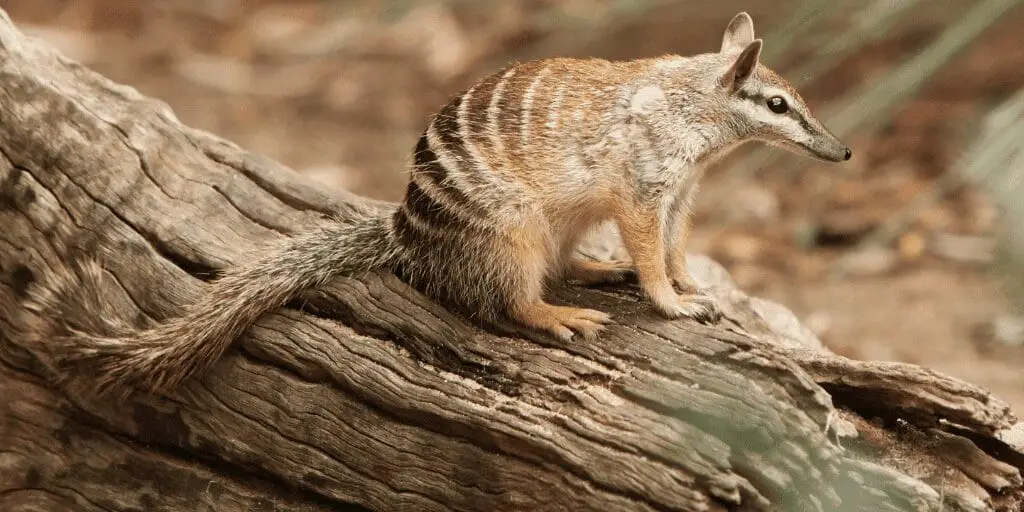
The numbat, also known as the banded anteater, is a small, distinctive marsupial found in Western Australia. With its striking black and white stripes, bushy tail, and long, sticky tongue, the numbat is a unique and fascinating creature.
Unique Features and Adaptations
Numbats have several unique features and adaptations that set them apart from other marsupials:
- Long, sticky tongue for capturing termites
- Prominent, dark stripes across the back and rump
- Bushy tail for balance and signaling
- Sharp claws for digging and climbing
Diet and Feeding Habits
Numbats are insectivores, primarily feeding on termites. They use their keen sense of smell to locate termite nests and their long, sticky tongue to capture the insects.
A numbat can consume up to 20,000 termites per day, playing a vital role in controlling termite populations in their native habitat.
Habitat and Conservation
Numbats were once widespread across southern Australia, but their range has significantly decreased due to habitat loss, fragmentation, and predation by introduced predators like foxes and cats. Today, they are found only in a few isolated populations in Western Australia, primarily in the Dryandra Woodland and Perup Nature Reserve.
Numbats are listed as endangered by the IUCN, with an estimated population of fewer than 1,000 individuals remaining in the wild. Conservation efforts, such as predator control, captive breeding, and reintroduction programs, are vital to protecting these unique marsupials.
9. Quokka: The Smiling Wallaby
The quokka is a small macropod native to southwestern Australia, best known for its adorable appearance and friendly demeanor. Often described as the “happiest animal in the world,” the quokka has become an internet sensation and a symbol of Australian wildlife.
Physical Characteristics and Behavior
Quokkas are small wallabies with several distinctive features:
- Round, compact body with short legs
- Small, rounded ears
- Short, furry tail
- Cute, “smiling” expression
These social animals live in groups called mobs and are most active at night, feeding on a variety of vegetation, including leaves, stems, and bark.
Habitat and Distribution
Quokkas are found primarily on Rottnest Island, a small island off the coast of Western Australia near Perth. They also have a small mainland population in the southwest of Western Australia, mainly in the Darling Range.
The quokka’s preferred habitat includes scrubland, forest, and swampy areas with dense vegetation for shelter and food.
Quokka Selfies and Tourism
In recent years, quokkas have gained international fame due to the popularity of “quokka selfies” – photographs of tourists posing with the smiling marsupials. While this has boosted tourism on Rottnest Island, it has also raised concerns about the potential impact on the quokkas’ well-being.
Visitors to Rottnest Island are encouraged to admire quokkas from a distance and refrain from feeding them human food, as this can lead to health problems and alter their natural behavior.
10. Australian Magpie: The Intelligent Songbird
The Australian magpie is a large, intelligent bird found throughout Australia and southern New Guinea. Known for their distinctive black and white plumage, beautiful singing voices, and complex social behavior, Australian magpies are one of the most iconic birds in the country.
Physical Characteristics and Behavior
Australian magpies have several distinctive features:
- Black and white plumage with patterns varying across regions
- Strong, hefty bill
- Long legs adapted for walking and foraging on the ground
- Melodious, complex vocalizations
These birds are highly intelligent and have a complex social structure, living in groups called tribes. They are known for their problem-solving abilities and have been observed using tools and engaging in cooperative hunting.
Habitat and Distribution
Australian magpies are found throughout mainland Australia and southern New Guinea, inhabiting a wide range of habitats, including:
- Open woodlands and forests
- Agricultural and pastoral lands
- Urban parks and gardens
They are adaptable birds that have thrived in human-modified landscapes, often forming close associations with people.
Swooping Behavior and Public Perception
During the breeding season (typically August to October), some Australian magpies exhibit territorial swooping behavior to protect their nests and young. This behavior has led to conflicts with humans, as magpies may perceive people as threats and swoop down on them.
To minimize the risk of being swooped, it is essential to be aware of nesting areas and avoid them if possible. Wearing a hat or carrying an umbrella can also help deter swooping magpies. It is crucial to remember that this behavior is a natural instinct to protect their young and not a sign of aggression towards humans.
Despite the occasional swooping incidents, Australian magpies are generally beloved by the public and admired for their intelligence, beautiful singing, and striking appearance.
11. Frilled-Neck Lizard: The Prehistoric-Looking Reptile
The frilled-neck lizard, also known as the frilled lizard or frilled dragon, is a distinctive Australian reptile known for its large, circular frill around its neck. These unique lizards are found in the tropical savannas and woodlands of northern Australia and are well-adapted to their arboreal lifestyle.
Frilled-Neck Lizard Characteristics and Behaviour
Frilled-neck lizards are medium-sized reptiles, growing up to 90 centimeters in length, with about two-thirds of that being their long, slender tail. Their most striking feature is the large, circular frill around their neck, which can measure up to 25 centimeters in diameter when fully extended.
The frill is used for several purposes:
- Intimidating predators and rivals by making the lizard appear larger
- Regulating body temperature by providing a large surface area for heat exchange
- Communicating with other frilled-neck lizards during territorial displays and courtship
Frilled-neck lizards are arboreal, meaning they spend most of their time in trees. They are excellent climbers and can run bipedally, holding their body upright and using their long tail for balance.
Habitat and Distribution
Frilled-neck lizards are found in the tropical savannas and woodlands of northern Australia, from the Kimberley region of Western Australia to the Cape York Peninsula in Queensland. They prefer habitats with a mix of trees and open areas, which provide opportunities for basking, hunting, and escape from predators.
Conservation Status and Threats
While frilled-neck lizards are not currently considered threatened, they face several potential challenges, including:
- Habitat loss and fragmentation due to land clearing and development
- Predation by introduced species like cats and foxes
- Illegal collection for the pet trade
- Climate change and associated impacts on their tropical habitat
Protected areas and responsible land management practices are essential to maintaining frilled-neck lizard populations in the wild.
12. Dingo: The Wild Australian Dog
Dingoes are wild canines native to Australia, believed to have arrived on the continent around 4,000 years ago with human settlers from Southeast Asia. These intelligent and adaptable animals play a crucial role in the Australian ecosystem as apex predators.
Dingo Characteristics and Behaviour
Dingoes are medium-sized canids, weighing between 13 and 20 kilograms and standing about 60 centimeters tall at the shoulder. They have a lean, muscular build, with a pointed snout, erect ears, and a bushy tail.
Dingo fur color varies from sandy yellow to reddish-brown, often with white markings on the chest, feet, and tail tip. This coloration helps them blend into their surroundings, making them effective hunters.
Dingoes are highly social animals, living in packs with a strict hierarchy. They are also intelligent and adaptable, able to survive in a wide range of habitats and exploit various food sources.
Habitat and Distribution
Dingoes are found throughout mainland Australia, in habitats ranging from deserts to forests and even urban areas. They are absent from Tasmania, where they were never introduced, and have been eradicated from many parts of southeastern Australia due to their perceived threat to livestock.
Ecological Role and Relationship with Humans
As apex predators, dingoes play a crucial role in regulating the populations of their prey species, such as kangaroos, wallabies, and rabbits. This helps maintain the balance of the Australian ecosystem and can have positive effects on vegetation and smaller animal species.
However, dingoes have a complex and often contentious relationship with humans:
- They are seen as a threat to livestock, particularly sheep, and have been the target of extensive control measures, including fencing, trapping, and poisoning
- They are revered by many Indigenous Australians, who have lived alongside dingoes for thousands of years and consider them an important part of their culture and spirituality
- They are sometimes kept as companion animals, although this is controversial due to their wild nature and potential impacts on pure dingo populations
Balancing the ecological role of dingoes with human interests remains an ongoing challenge in Australia.
13. Australian Magpie: The Intelligent Songbird

The Australian magpie is a large, intelligent songbird found throughout much of Australia. Known for their striking black and white plumage, melodious songs, and complex social behavior, these birds are a well-known and beloved part of the Australian landscape.
Australian Magpie Characteristics and Behaviour
Australian magpies are large birds, measuring around 40 centimeters in length and weighing about 350 grams. They have distinctive black and white plumage, with a black head, neck, and upper breast, and white shoulders and rump.
These birds are known for their melodious songs and complex vocalizations, which they use to communicate with other magpies and establish territorial boundaries. They are also highly intelligent, exhibiting problem-solving skills and the ability to recognize individual human faces.
Australian magpies are social birds, living in groups of up to 20 individuals. These groups have a strict hierarchy, with a dominant pair and subordinate birds that help raise the young and defend the territory.
Habitat and Distribution
Australian magpies are found throughout mainland Australia and southern New Guinea, in a wide range of habitats, including urban areas, farmland, grasslands, and open forests. They are adaptable birds and have thrived in human-modified landscapes.
Relationship with Humans
Australian magpies have a complex relationship with humans:
- They are a beloved part of the Australian landscape, admired for their songs and charismatic behavior
- They are sometimes seen as a nuisance due to their territoriality and aggressive behavior during the breeding season, when they may swoop and attack people who come too close to their nests
- They have benefited from human activities, such as land clearing and urbanization, which have created more open habitats and food sources for them
Despite the occasional conflicts, Australian magpies remain an important and cherished part of Australia’s natural and cultural heritage.
14. Australian Brush-Turkey: The Industrious Megapode
The Australian brush-turkey, also known as the bush or scrub turkey, is a unique bird found in the eastern rainforests and woodlands of Australia. These birds are famous for their incredible nesting mounds and the unusual reproductive strategy of the megapode family.
Australian Brush-Turkey Characteristics and Behaviour
Australian brush-turkeys are large birds, measuring around 60-75 centimeters in length and weighing up to 2.5 kilograms. They have a dark gray or blackish plumage, a naked, bright red head and neck, and a yellow neck wattle.
The most remarkable feature of the Australian brush-turkey is its nesting mound. Males build large mounds of leaf litter, soil, and other organic material, which can measure up to 4 meters in diameter and 1 meter in height. These mounds act as incubators for the eggs, with the heat generated by the decomposing organic matter keeping the eggs warm.
Females lay their eggs in the mound, and then leave them to be incubated by the mound’s heat. The chicks hatch fully developed and dig their way out of the mound, able to fend for themselves from the moment they emerge.
Habitat and Distribution
Australian brush-turkeys are found in the rainforests and wet sclerophyll forests of eastern Australia, from far north Queensland to southern Victoria. They prefer areas with a dense understory and plenty of leaf litter for building their nesting mounds.
Conservation Status and Threats
While Australian brush-turkeys are not currently considered threatened, they face several potential challenges, including:
- Habitat loss and fragmentation due to land clearing and urbanization
- Predation by introduced species like foxes and cats
- Disturbance of their nesting mounds by humans and domestic animals
Protecting the rainforests and woodlands where these birds live is crucial to ensuring the survival of Australian brush-turkey populations in the wild.
15. Australian Giant Cuttlefish: The Master of Disguise

The Australian giant cuttlefish is a remarkable cephalopod found in the temperate coastal waters of southern Australia. These intelligent and fascinating animals are known for their incredible color-changing abilities and complex mating behaviors.
Australian Giant Cuttlefish Characteristics and Behaviour
Australian giant cuttlefish are the largest cuttlefish species in the world, with males reaching up to 50 centimeters in length and weighing up to 10 kilograms. They have a soft body, eight arms, and two long tentacles used for capturing prey.
The most remarkable feature of the Australian giant cuttlefish is its ability to change color and texture rapidly. Using specialized skin cells called chromatophores, cuttlefish can create intricate patterns and colors to camouflage with their surroundings, communicate with other cuttlefish, and mesmerize their prey.
During the breeding season, Australian giant cuttlefish gather in large aggregations, with males competing for the attention of females. Males use their color-changing abilities to display complex patterns and pulsating stripes to attract mates and intimidate rivals.
Habitat and Distribution
Australian giant cuttlefish are found in the temperate coastal waters of southern Australia, from southern Queensland to Western Australia, including Tasmania. They prefer rocky reefs, seagrass beds, and sandy bottoms, where they can find shelter and hunt for prey.
Conservation Status and Threats
While Australian giant cuttlefish populations are currently considered stable, they face several potential threats, including:
- Overfishing, as they are sometimes caught as bycatch in commercial fisheries
- Habitat degradation due to coastal development, pollution, and climate change
- Predation by larger marine animals, such as dolphins and seals
Protecting the coastal habitats where these cuttlefish live and ensuring sustainable fishing practices are essential to maintaining healthy Australian giant cuttlefish populations in the wild.
Frequently Asked Questions
Are there any venomous animals in the list?
Yes, the platypus is one of the few venomous mammals in the world. Male platypuses have venomous spurs on their hind legs, which they use for defense against predators and rival males during mating season.
Which of these animals is the largest?
The red kangaroo is the largest marsupial in the world and the largest animal on this list. Adult male red kangaroos can grow up to 1.8 meters tall and weigh up to 90 kilograms.
Are any of these animals critically endangered?
The northern hairy-nosed wombat is critically endangered, with only around 200 individuals remaining in the wild. Habitat loss, drought, and competition with introduced herbivores have contributed to their decline.
Which animal is known for its unique cubic droppings?
Wombats are known for their unique adaptation of producing cubic feces. The cubic shape helps them mark their territory more effectively, as the droppings are less likely to roll away.
Can any of these animals be kept as pets in Australia?
While some people do keep dingoes as companion animals, it is controversial due to their wild nature and potential impacts on pure dingo populations. Generally, it is not recommended to keep any of these wild animals as pets in Australia.
- Wild Animals in Costa Rica: A Biodiverse Paradise - 2024-05-16
- Animals That Live in the Rainforest: A Diverse Wonder - 2024-05-15
- Animals in the Safari: A Captivating African Adventure - 2024-05-15






